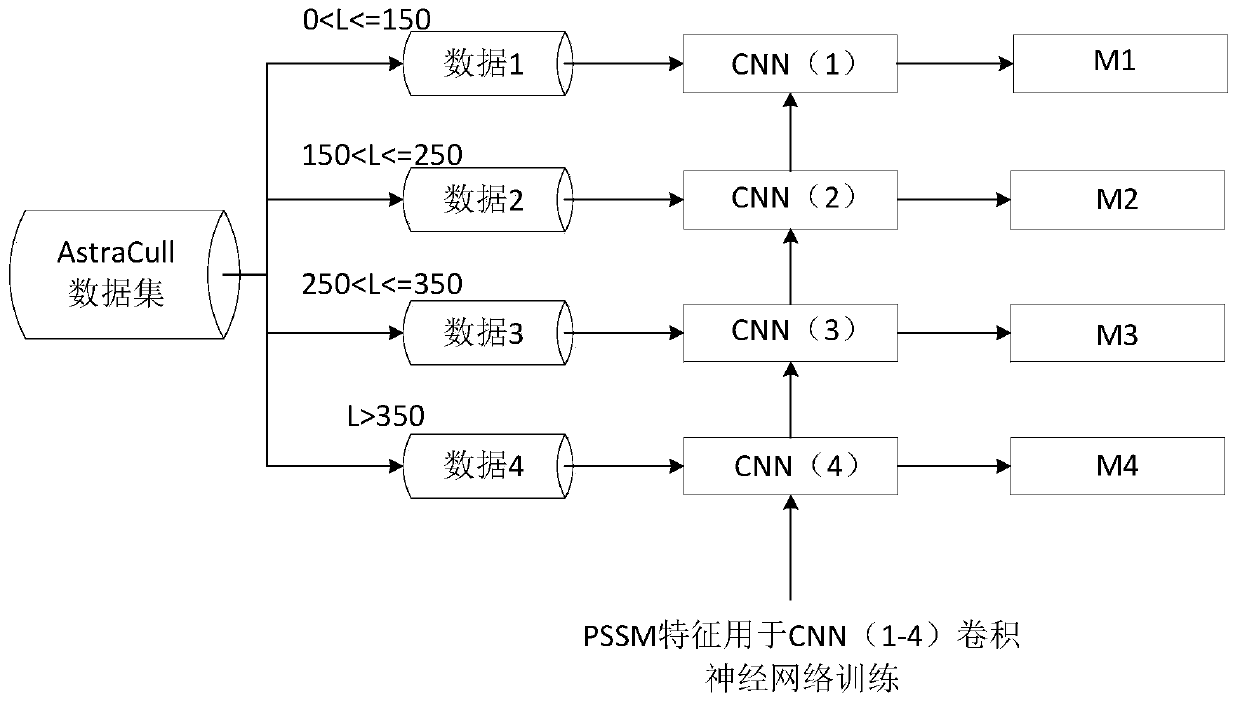Method and system for classification modeling based on protein length and DCNN
A modeling method and protein technology, applied in the field of classification modeling method and system based on protein length and DCNN
- Summary
- Abstract
- Description
- Claims
- Application Information
AI Technical Summary
Problems solved by technology
Method used
Image
Examples
Embodiment 1
[0072] The classification modeling method based on protein length and DCNN of the present invention comprises the following steps:
[0073] Step 1: Obtain multiple data sets as the training set, each data set includes multiple proteins, extract the PSSM features generated by PSI-Blast in the data set, and convert the format of the PSSM features by setting different sliding windows;
[0074] Step 2: Group the proteins in the training set based on the length of the protein to obtain multiple model groups;
[0075] Step 3: For each model group, construct a prediction model corresponding to the model group based on the deep convolutional network, and train the prediction model through the model group to obtain a trained prediction model.
[0076] Among them, the data set selected in the first step is a classic data set for protein secondary structure prediction. In this embodiment, the data set AstraCull with 15666 protein pieces synthesized from Astrall and CullPDB data is used a...
Embodiment 2
[0112] The classification modeling system based on protein length and DCNN of the present invention includes an input module, a format conversion module, a grouping module and a model training module.
[0113] The input module is used to obtain multiple data sets as training sets, and each data set includes multiple proteins. The selected data set is a classic data set for protein secondary structure prediction. In this example, Astrall and CullPDB data were synthesized into a data set AstraCull with 15666 protein entries.
[0114] The format conversion module is used to extract the PSSM features generated by PSI-Blast in the data set, and perform format conversion on the PSSM features through the sliding window. In the format conversion module, the 20-bit PSSM feature generated by PSI-Blast in the above data set is extracted, and after the format conversion of the PSSM feature through a sliding window with a value of 13, the feature of each amino acid in the training set is a...
PUM
 Login to View More
Login to View More Abstract
Description
Claims
Application Information
 Login to View More
Login to View More - R&D
- Intellectual Property
- Life Sciences
- Materials
- Tech Scout
- Unparalleled Data Quality
- Higher Quality Content
- 60% Fewer Hallucinations
Browse by: Latest US Patents, China's latest patents, Technical Efficacy Thesaurus, Application Domain, Technology Topic, Popular Technical Reports.
© 2025 PatSnap. All rights reserved.Legal|Privacy policy|Modern Slavery Act Transparency Statement|Sitemap|About US| Contact US: help@patsnap.com



